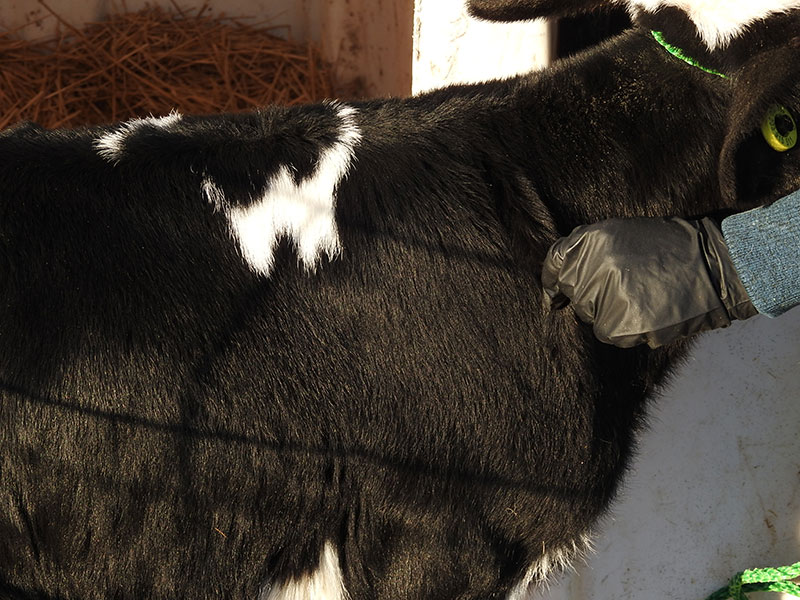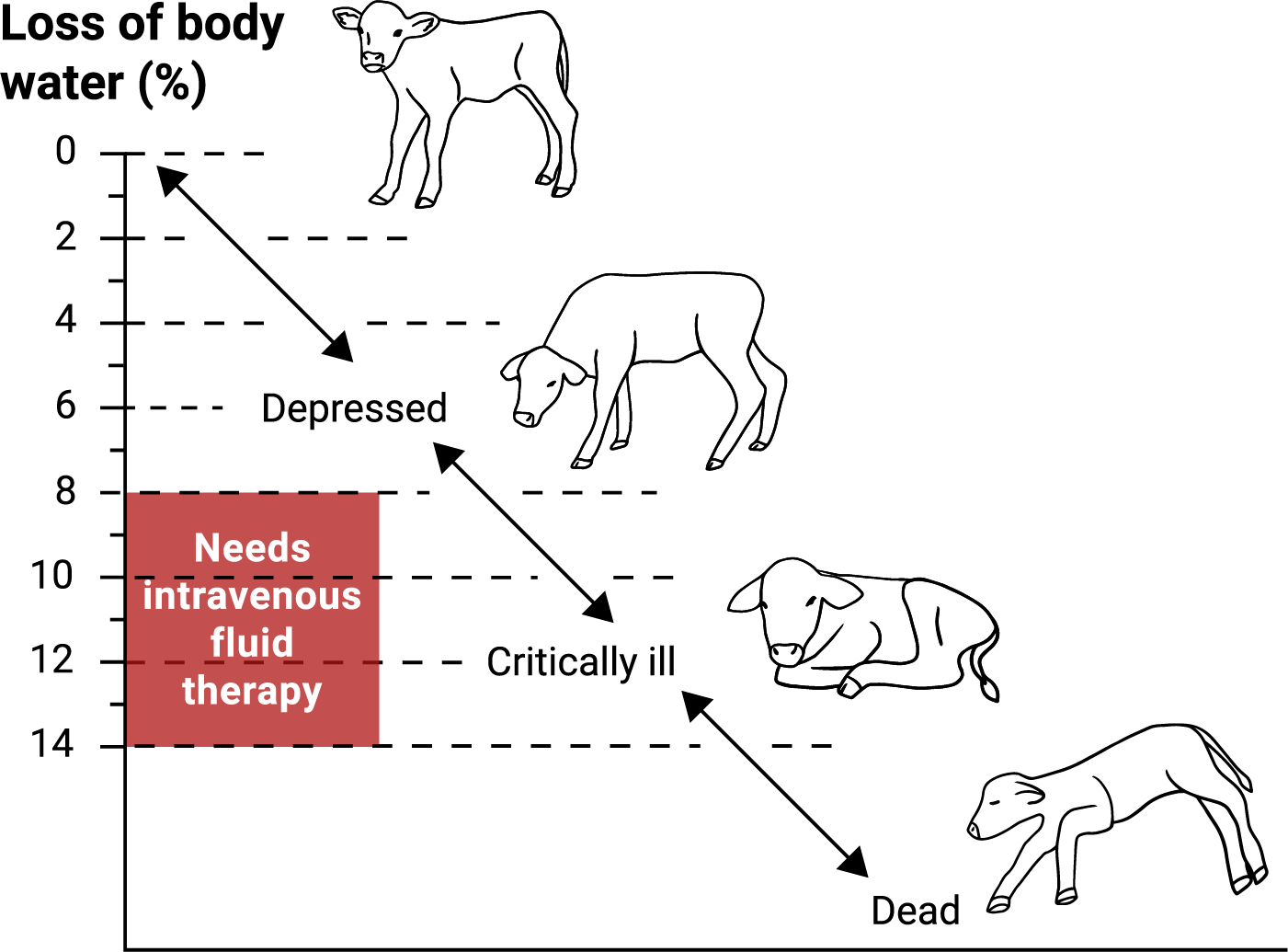Section 1 | Selecting the Right Calf
Page 05 /
Evaluating Dehydration
Many calves arrive with dehydration when they enter into veal facilities; they are young and have spent several hours in transport without food or water. In fact, 46% of calves arriving to a facility in Ontario were dehydrated. Dehydrated calves are at greater risk of dying in the growing period. Those that do survive have a reduced level of growth. After body weight, dehydration at arrival has the second greatest impact on profitability.

Source: ACER Consulting Ltd.
Identifying Calves with Dehydration
An easy test for dehydration is to pinch the calf’s skin gently along its neck and see if the skin returns quickly to normal or if it remains in folds for a few seconds, which is a sign of dehydration.
Looking at the inside corner of the eye can also be used as an indicator of dehydration. If there appears to be a gap between the corner of the eye (canthus) and the eyeball, significant dehydration is present. Attitude can also be an indicator as well — is the calf bright, alert, and motivated to drink/suck?
The chart below, highlights the severity of dehydration that could be present at arrival.
| Level of Dehydration | Attitude | Skin Tent (sec) | Eye Recession |
| <5% | Normal, bright, alert | <1 | None |
| 6-8% (Mild) | Slightly depressed, reluctant to stand | 1-2 | Slight |
| 8-10% (Moderate) | Depressed, inability to rise | 2-5 | Obvious |
| >10% (Severe) | Comatose | 5-10 | Very recessed |
Ideally, calves should not arrive at sales facilities with dehydration, however, the time in transit and length of time from their previous meal might lead to mild dehydration. Calves should be shipped at older ages (at least >1 week of age) and at higher body weight to provide them with the necessary adaptations to tolerate being shipped.
At a sale, calves with any type of dehydration should be discounted or not purchased to ensure only healthy calves are introduced into your facility. If a dehydrated calf is purchased, it is important that the calf is treated promptly with oral electrolytes to correct dehydration and reduce the risk of future disease development.
The chart below shows the changes in a calf’s presentation based on how dehydrated it is. Depressed and critically dehydrated calves require fluids to help correct the problem and prevent death.

Source: Penn State Extension